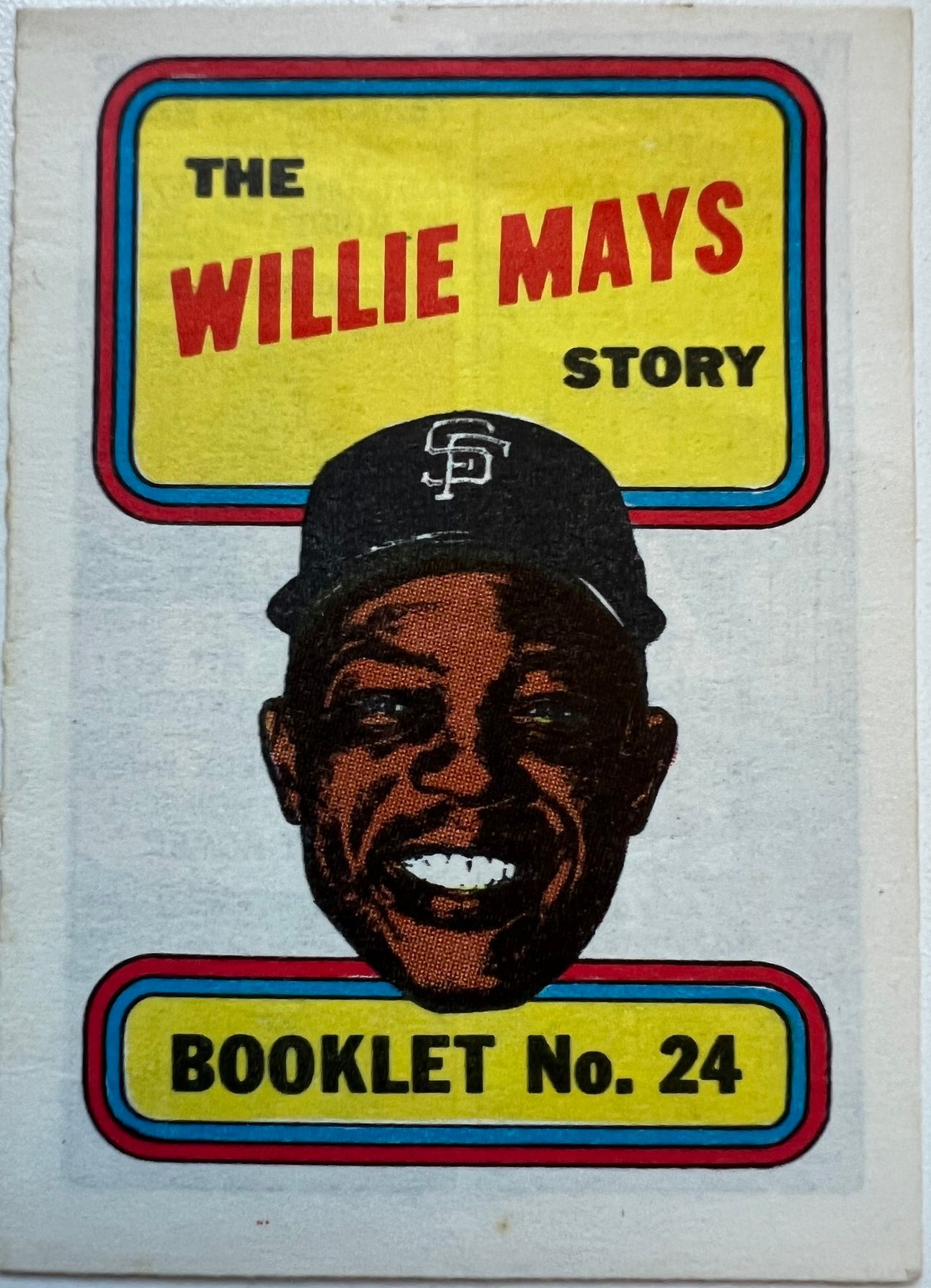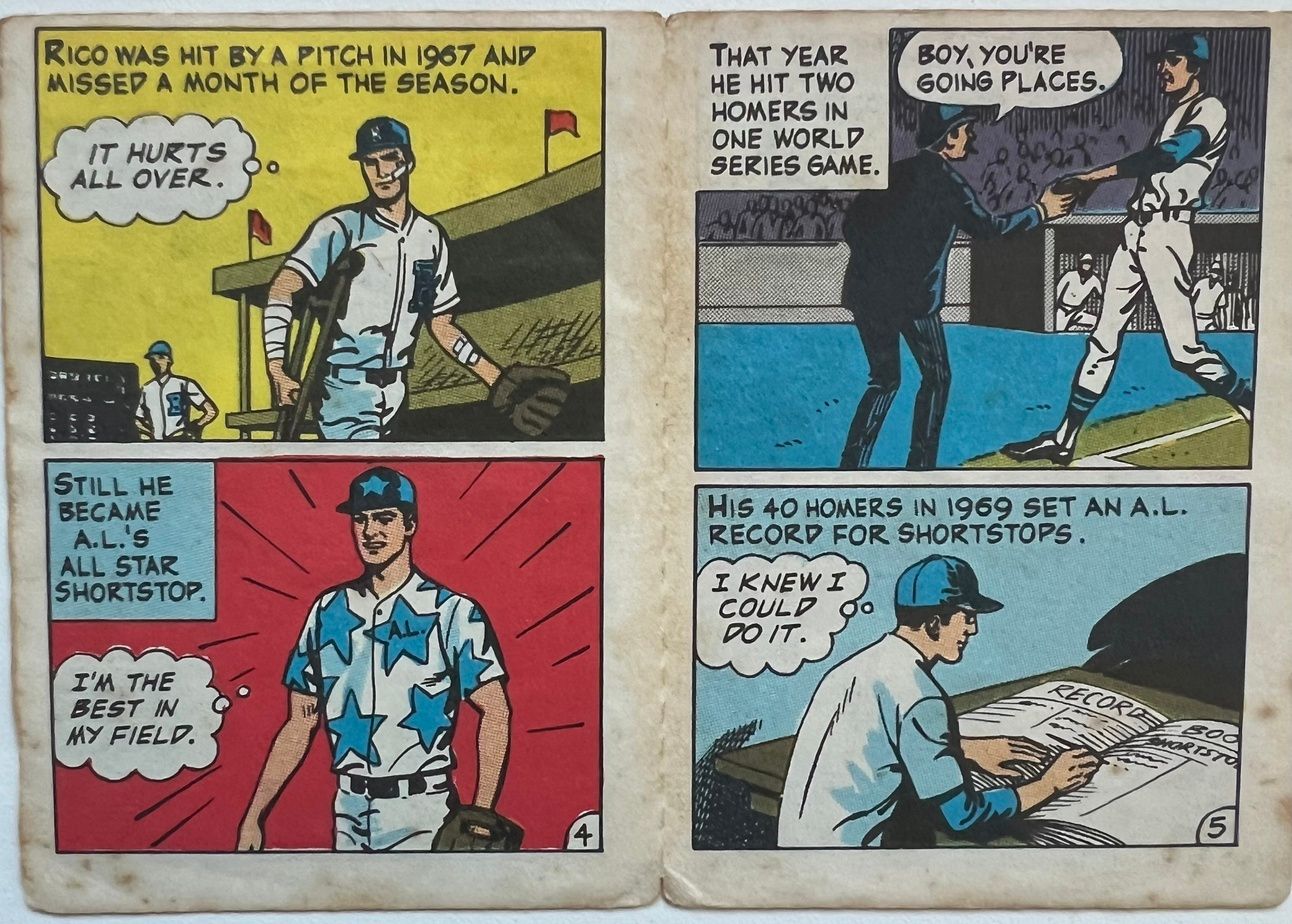- Drawn to Cards
- Posts
- The New Pope Already Has a Trading Card?
The New Pope Already Has a Trading Card?
Plus a Profile of a Fun Set From the 1970s
I just need to state that, as I write this on Saturday afternoon prior to their game against the Texas Rangers, my team, the Detroit Tigers, have the best record in the MLB, tied with the Dodgers at 26-13. I was about to say that this team actually looks like a legitimate contender, primarily because of their starting rotation, only to just now see that Casey Mize has been placed on the DL due to a left hamstring strain - and as the ESPN article reminded me, he was limited to 20 starts last year due to a left hamstring strain. In other words, REALLY!?!?!?!
(Update: The Tigers got kicked around at home by the Rangers this weekend, so as someone who’s superstitious when it comes to the teams I follow, I clearly need to stop talking about them in the newsletter. Lesson learned.)
In this issue you'll find:
A 1980 Topps Player Profile of Tom Burleson
The 1970 Topps Story Booklets
News in the hobby
Recent Vintage Card Voyage videos
Let’s get into it.
1980 Topps Basketball Player Profile: Tom Burleson
I’m relatively well versed on sports but I had no idea who Tom Burleson was upon finding his card in my collection of 1980 Topps basketball cards. That’s why I write these profiles, to get to learn about these world-class athletes and the lives they’ve led, both within and outside their sports careers.

Burleson was born in 1952 in Crossnore, North Carolina, and went to Newland High School, and upon a school consolidation, with Avery County High School. Along with being a high school All American, he was the 1970 North Carolina Prep Player of the Year. Nicknamed the “Newland Needle,” the 7-foot-2 center was contacted by more than 300 schools, and Burleson even said some schools offered him money to play. What he instead accepted was a scholarship to North Carolina State University where he wasn’t allowed to play his freshman year (a rule that would change in 1972).
During the three years he did start, he led the team in rebounding each year, in scoring once, and averaged a double-double each season. His presence also helped NC State recruit David Thompson, who would go on to be a back-to-back National Player of the Year in the 1973-74 and 1974-75 seasons. In that 1973-74 season, the Wolfpack would go 30-1 and capture the NCAA National Championship, beating Marquette and ending UCLA’s record-setting seven-season title run. Burleson, meanwhile, won multiple accolades in his college career, including All-Conference three times, All-American twice, an All-Final Four nod, and he was named to the 1972 Olympic team, where basketball took a backseat to real world events.
The 1972 Summer Olympics were held in Munich, Germany (West Germany at the time), and those were the Olympics where Palestinian militants attacked the Olympic Village and took Israeli athletes and coaches hostage. Burleson, unwittingly, became involved in the horrific event, at one point being held at gunpoint, as the hostages were removed from the Village prior to being killed (as he recounted in this video from last year).
Those Olympics would also become infamous for the U.S. basketball team, a team that had grown accustomed to dominating internationally, having won the previous seven Olympic gold medals. But in 1972, just days after the Olympic Village attack, the U.S. basketball team met the USSR in the gold medal game. The Soviet Union led nearly the entire game, until America’s Doug Collins made two free throws with seconds to go, putting the U.S. ahead 50-49. Then, chaos ensued.
Following a time-out the Soviet head coach reportedly requested during Collins’ free throws but which the officials didn’t initially give them and, based on who you ask, one that they either should or shouldn’t have been awarded, the USSR got three different opportunities to inbound the ball, with the U.S. assuming they had won the game following the second inbound. That fateful third inbound went the length of the court, right into the waiting arms of the Soviet center Alexander Belov, as the U.S.’s Kevin Joyce’s momentum carried him out of bounds and the U.S.’s Jim Forbes lost his balance and fell down, allowing Belov an easy lay-up for the last-second win, 51-50. That ended the United States team’s 63-0 Olympic record, and because of the controversial ending, the U.S. team voted unanimously to refuse their silver medals and didn’t show up at the medal ceremony.
And why didn’t Burleson’s name come up regarding that infamous game? He was suspended by coach Hank Iba and didn’t play in the game, having violated team rules because … he brought his fiancee to his room in the Olympic Village the same night he had been held at gunpoint. Yes, really.
Following his college career, Burleson was drafted third in the 1974 NBA Draft by the Seattle SuperSonics, a team coached by the legendary Bill Russell. That first season, he was named to the All-Rookie team, finishing with 10 points and seven rebounds per game. The Sonics reached the playoffs that same year, and Burleson excelled, averaging 20 points and 10 boards a game, playing nine games as the Sonics would end up losing in the Western Conference Semifinals to the Golden State Warriors.
The next season would be Burleson’s best, as he averaged 15.6 points and 9 boards a game, and Seattle again got to the playoffs, with Burleson thriving once more, averaging 20 points and 9.5 rebounds a game, but the Sonics again got bounced in the semifinals. The 1976-77 season would be his last in Seattle, as he would land with the Kansas City Kings the following year, where he would play the next three seasons. During a February game in his second season with the Kings, he crashed into Maurice Cheeks while trying to break up a fight and suffered ligament damage in his left knee. According to Burleson, the injury would end his NBA career, even though he ended up playing parts of two more seasons, his last one with the Atlanta Hawks.
Following his basketball career, Burleson has explored a variety of pursuits. There are mentions of speedboat racing, running a basketball camp founded in 1983 for more than four decades with his former teammate David Thompson near Burleson’s hometown, and serving as a two-term Avery County commissioner and then nearly 30 years as a planning inspections director back in Newland. His faith has also played a big role in his life, including establishing a charitable organization that helped with expanding healthcare access in regions like Malawi, leading mission trips to Africa, and becoming an ordained minister. He also was recently impacted by Hurricane Helene while suffering through a heart issue, but after he recovered, he did what he could to help the area residents, donating a portion of his Christmas tree farm sales to help others in need pay their bills. Based on all the good work he’d done over the years, in 2022, Burleson was even awarded the Old North State Award by then-Governor Roy Cooper for “Dedication and Excellent Service Beyond Expectations.”
Set Profile: 1970 Topps Story Booklets
This set’s a fun one, especially for those who also love comic books. It’s a small set, totaling 24 booklets, with one player for each team in the MLB. They served as inserts in regular packs of 1970 Topps baseball cards, in the later series, measuring 2 1/2” by 3 7/16” (ever so slightly shorter than regular cards, which are 3 1/2”).

Of the 24 cards, there are seven Hall of Famers - Tony Oliva (#8), Reggie Jackson (#10), Orlando Cepeda (#13), Ernie Banks (#14), Pete Rose (#15), Bob Gibson (#22) and Willie Mays (#24). And, per this Sports Collectors Daily article, Rose’s booklet was the one used to promote the series on the card boxes.

The aforementioned SCD article goes into much greater detail, including matching the headshot images Topps used for the booklets with the other sources, whether it’s regular or giant Topps cards, their coins, their baseball stand-ups, or their baseball tattoos.

And, of course, the true appeal of the booklets are what’s inside - six page of a comic book story about each of the players, as Topps was presumably. trying to appeal to all those comic book readers in the early 1970s.

Interestingly, the only PSA grades I’ve seen for these booklets is for them authenticating autographs, while SGC and Beckett seem to have previously graded them. Ungraded, they are relatively affordable, especially for 55-year-old memorabilia.
News Briefs
Vintage Card Voyage: Recent Videos

Thanks for reading. Subscribe for future issues, and please also check out and subscribe to Vintage Card Voyage.
Reply